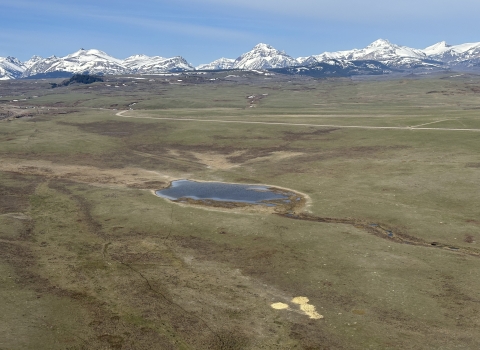Paul Johnson is the dean of southern malacologists, the scientists who traipse around streams trying to save mussels and snails. His work protecting mollusks – the custodians of water quality -- is particularly moving, and necessary, as we commemorate the 50th anniversary of the Endangered Species Act.
Johnson runs the Alabama Aquatic Biodiversity Center in Marion, near the Cahaba River and not much else. With a staff of five, and 13,000 square feet of aquaculture space, Johnson raises up a slew of federally endangered mussels and snails, including plicate rocksnails, pale lilliputs, and Alabama lampmussels.
He was born in Brandenburg, Kentucky, earned undergraduate and master’s degrees in biology from the University of Louisville, and a PhD from Louisiana State University. Johnson did post-doc work at the University of Texas at Arlington. He was hired as a research scientist by the Tennessee Aquarium Research Institute in 1997 and became director in 2003. Johnson was tapped by the Alabama Department of Conservation and Natural Resources two years later to start the aquatic center.
The U.S. Fish and Wildlife Service finances two-thirds of the center’s $400,000 annual operating budget via the State Wildlife Grant program. Johnson, 59, works closely with Service biologists across the Southeast and, in particular, with the Partners for Fish and Wildlife Program which helps landowners restore habitats. He has his work cut out for him: Alabama’s freshwater biodiversity is unparalleled in the United States, yet 67 species of mollusks and fish have gone extinct over the last 80 years.
The Service’s Dan Chapman spoke with Johnson recently while he planted 80 juvenile, and federally endangered Coosa moccasinshell mussels into West Armuchee Creek in northwest Georgia which flows into the Oostanaula River and, eventually, the Coosa River which flows into Alabama. The interview has been condensed for brevity (unlike the previous sentence).
Q: What’s special, from a malacologist’s perspective, about the Southeast?
A: We have 70 federally listed mussels in Alabama and 13 snails -- so, beat that! But let’s talk budgets. The Southeast region has the most species and a very limited amount of resources. The Columbia River in the Northwest, for example, has 54 species of fish. The Cahaba River basin in Alabama has 131 species of fish. We’ve got all of the species and none of the money.
Q: What are some of the aquatic highlights of your illustrious career?
A: I’ve re-discovered six Lazarus species – species thought extinct -- including the Georgia pigtoe in the Conasauga River in 1999. We walked the river from Dalton to the headwaters, 50 some miles of Conasauga, in a year, and found the species still alive. We also determined the range of the interrupted rocksnail in a 10-mile stretch of the Oostanaula River in 2003. Both species have been listed by FWS as endangered since 2010.
Q: What role does FWS play in your work?
A: The Service’s participation is critical. But you guys get overwhelmed with work. The species recovery work is only half the battle. The other half is habitat security. But our partners who work in land acquisition, like The Nature Conservancy and the Service’s Partners for Fish and Wildlife, help a lot. We know where these critical spots for conservation are. We’ve just got to get them protected.
Q: It’s the 50th anniversary of the Endangered Species Act. A good law?
A: Absolutely. How few species have we lost with the ESA? It’s a pretty low number. It’s brought way more attention to conservation, and preserved species and habitat. It reduces the chance we’ll make an unfortunate mistake with a species. And most landowners will say, ‘Oh, I got one of those species on my land. That’s pretty cool. Let’s protect it.’
Q: But most southerners will never see a pigtoe or a moccasinshell. Why should we care if they’re protected?
A: You want to burn every book in the library? There’s data here – genetic and molecular data – and you never know what’s going to prove enormously important. It could lead to the next big discovery. Not long ago, nearly 40 percent of pharmaceuticals had their active compound discovered from plants or animals. Every time you lose a species, it’s like burning a scientific book. If you want a more spiritual argument, didn’t Noah put everything on the boat? That infers that the Almighty cared about all species and that we have that responsibility too.



